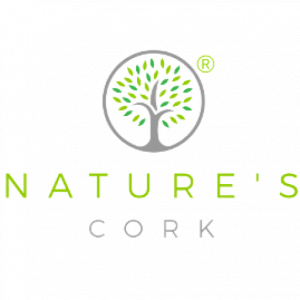What is cork?
Cork is a material made from the bark of the cork oak tree (Quercus Suber, if you're feeling fancy). The bark of the tree is usually processed and used to make other products, such as tableware, yoga bricks, and fashion accessories. Some products use natural, unprocessed cork.
Where does cork come from?
The country with the most cork is Portugal. While it only accounts for approximately 34% of the cork trees (by the square footage of land), it manufactures almost 50% of the cork worldwide, and is therefore known is the cork capital of the world. Our products are all imported directly from Portugal, because after 70 years of dealing with cork, we know that's where the best quality cork comes from. We not only sell the cork we import, we also use it to make other great new products.
Why is using cork products better than using wooden products?
Both cork products and wooden products are made of natural, biodegradable materials and are therefore better for the environment than many of the synthetic alternatives. However, unlike wooden products, there is no need to cut down the tree to manufacture cork! The cork bark is peeled off and it renews itself every 9 years or so, and keeps renewing itself until the tree dies at the ripe old age of 150-200 years! That makes cork one of the most eco-friendly materials available.
What kinds of products can be made of cork?
Most of us are familiar with the "regular" products - cork stoppers in wine bottles and memo boards. But cork today can (and is!) used for so much more. It is used today in interior decorating with cork wall tiles, there are yoga mats and bricks, cork accessories, and tableware.
What are the advantages of using cork?
In addition to being very environmentally friendly, cork has other advantages. For example, using cork yoga bricks means using a material that's more environmentally friendly than synthetic alternatives, but maintains the slight flexibility that wooden bricks lack. Cork is also very lightweight and easy to clean (always a plus!).
What are the disadvantages of using cork?
Cork is a natural, biodegradable material and as such, it won't last as long as other synthetic materials. For example, cork will dry out if it is exposed to sunlight for extended periods so it's important to minimize the exposure. Cork, while known for its flexibility, is also fragile and can break if not handled with care.
How should I care for my cork products?
The most important thing is to avoid too much direct sunlight and try to keep your products away from the air conditioning vent, which blows dry air and may dry out your cork. Cork can get wet but it's best for it not to be submerged in water. If you need to clean your product, you can use a damp cloth to wipe it clean.
How can cork be "vegan"?
The term "vegan" is most commonly associated with food, namely foods made without any animal by-products such as meat, dairy, and eggs. However, the term also relates to the broader sense of a lifestyle that refrains from the use of animal by-products, including leather and wool. Cork is used to make special cork fabric. These fabrics are soft, flexible, and durable, making them an excellent alternative to leather. It is used in accessories such as purses, wallets, hats, belts, and even umbrellas!
Have another question we missed? Feel free to contact us and we'll get back to you with an answer as soon as we can

